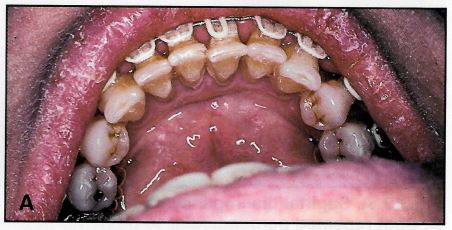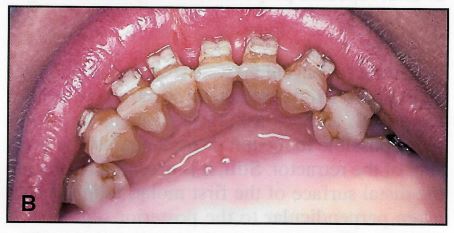Many kinds of wedges and springs are available to correct minor tooth rotations that remain toward the end of active treatment. I find these devices work well with metal brackets, but correcting rotations with ceramic or plastic brackets is much more difficult because of the brackets' design and the thickness of their bases. Adding a loop or 2nd-order bend to the archwire can correct a rotation, but will preclude any future sliding along the wire.
A simple method that has worked for me with esthetic brackets is to block one side of the slot with a small amount of light-cured composite, then ligate the archwire only to the opposite wing (A). This will apply pressure to the composite, and the tooth will rotate (B).
If the bracket design does not allow single-wing engagement, stretch out the elastomeric ligature before placement. The slack between the ligature and the bracket will be taken up by the pressure of the archwire, and the tooth will rotate--although this method may take a little longer.
Keep in mind that the composite will reduce the width of the bracket slot. Therefore, any torquing or major tooth movements should be carried out before this method is attempted.
Similar articles from the archive:




